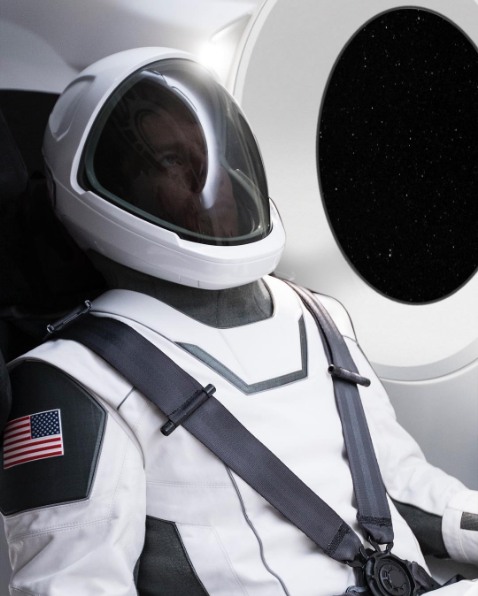
The stuff of movies: new SpaceX suit could be in a film (Courtesy: SpaceX)
By Sarah Tesh and Michael Banks
Astronauts on board the SpaceX Dragon Capsule will look like they’ve stepped out of a sci-fi film. This week, Elon Musk revealed his company’s futuristic space attire on Instagram. The suits are aesthetically very different to the bulky gear NASA astronauts currently wear, the Extravehicular Mobility Unit (EMU). They are even sleeker than NASA’s next generation Z-2 suit, which was previewed in 2015. The SpaceX garb are apparently also easier to walk in and more practical for everyday use. While not quite at the tech standard of fiction, the SpaceX suits definitely look the part.
From the future, to the past – turns out that Pythagoras was not the first to work out his eponymous theorem. At least 1000 years before (so about 3500 years ago), an unknown Babylonian genius not only marked out the same theorem but also a series of complex trigonometry tables that scientists say are more accurate than any available today.
The mathematical inscriptions are written in a clay tablet (dubbed Plimpton 322) and researchers have been arguing for nearly a century about their meaning. Now, a team from the University of New South Wales in Australia believe they’ve cracked the four columns and 15 rows of markings. “Our research reveals that Plimpton 322 describes the shapes of right-angle triangles using a novel kind of trigonometry based on ratios, not angles and circles,” says Daniel Mansfield. “Babylonian mathematics may have been out of fashion for more than 3,000 years, but [the Plimpton 322 table] has possible practical applications in surveying, computer graphics and education. This is a rare example of the ancient world teaching us something new.”
Sport is all about “big data” these days and football is no different. During a game, a myriad of stats are amassed for each player from the distance they run to how many successful passes they make. Researchers at Walt Disney – yes, you read that right – have used player-position data during 45 European matches to develop an algorithm that can automatically recognize when teams are changing formation. The tool can be used to identify when defending players are out of position and put defending players in the best place based on what the attacking team is doing. So why is Disney carrying out this research? “This new capability has applications well beyond sports,” says Markus Gross, vice president at Disney Research. “These include robot movement, autonomous vehicle planning and modelling of collective animal behaviour.”
Guidelines
Show/hide formatting guidelines
this text was deletedwhere people live in harmony with nature and animals</q>
Some text